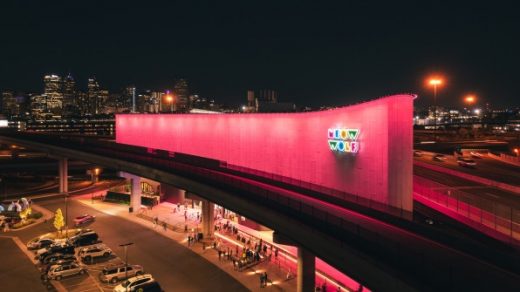How a weird triangle between 3 highways was turned into a cutting-edge museum
Let’s start with a little exercise. I would like you to input “Meow Wolf Denver” on Google Maps (here, I did it for you) and look at where the red pin falls on the map. Do you see it yet, the small, somewhat tear-shaped building tucked inside an interwoven web of highways?
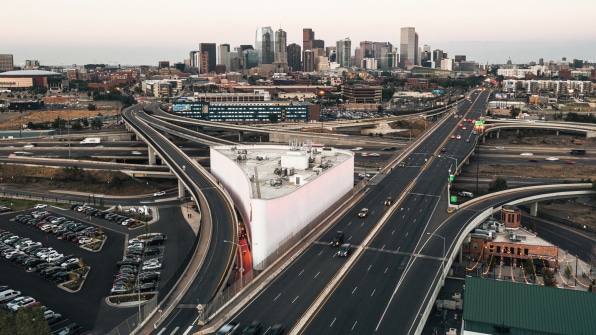
That, my friends, is Denver’s newest arts destination—and it sits on a tiny, triangular plot of land at the intersection of three highways.
Meow Wolf Denver opened to the public in September 2021, and everything about the building was defined by its tricky location. Designed to fill the void between the highways, the building rises 30 feet over three elevated viaducts: a stretch of I-25 and two off-ramps. The facade was even clad with specialty matte panels to ensure that the building doesn’t create a glare for drivers nearby. The result is something of an architectural feat—and a valuable lesson in how to build bold buildings on a piece of land that would’ve otherwise been unusable.
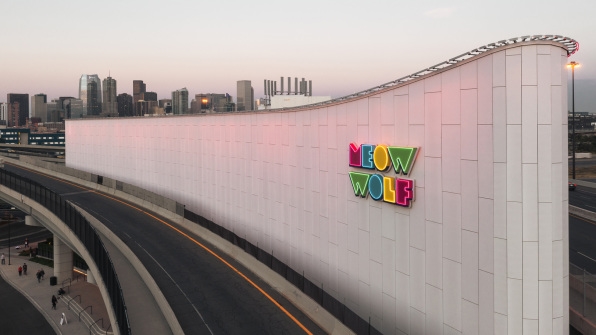
Since it was founded in 2008, Meow Wolf has grown from an informal collective of Santa Fe artists into a multimillion-dollar “dream factory” that has hosts large-scale immersive experiences. Now, the organization has landed in Denver.
After visiting a dozen sites for its new building, the team narrowed things down to three potential locations: two of them were in Denver’s River North Art District, but Meow Wolf was reluctant to displace existing organizations in a part of Denver that was already gentrifying. So they went for the third one—by three highways.
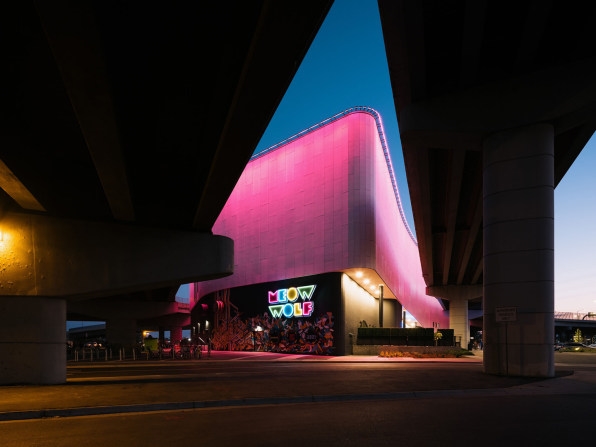
But it wasn’t an easy decision. When Meow Wolf’s co-founder Vince Kadlubek first saw the triangular void entangled in highways, he thought to himself, “no way we’re doing this site.” He remembers all the red flags: “How does a building get built here? How does it get through permitting? How can we get the square footage we’re looking for in such a small footprint?”
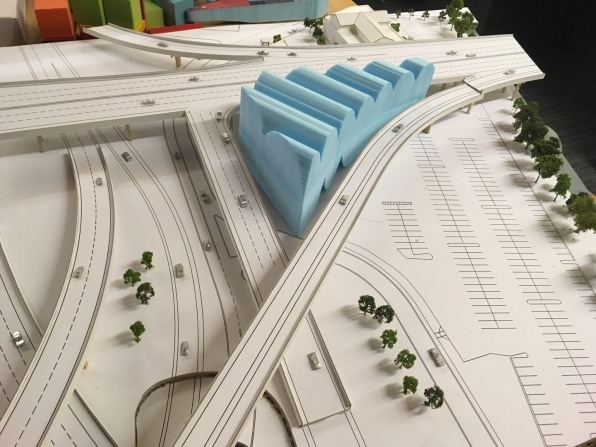
The answers came in the shape of a five-story unicorn designed by Denver-based architecture firm Shears Adkins Rockmore (SAR+), with boutique real estate firm Revesco Properties. Revesco specializes in what it calls “well-located yet often underperforming assets,” including a former water park that they are currently transforming into a new, 62-acre, mixed-use neighborhood called the River Mile.
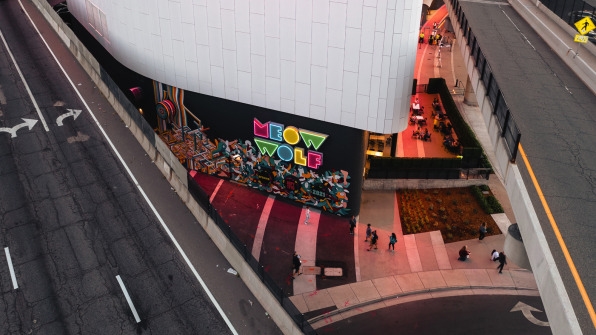
Meow Wolf sits at the southern edge of River Mile. Wait a few years, and this part of town promises to bring up to 15 million square feet of commercial and residential property to accommodate 15,000 residents, plus trails, parks, and pedestrian-friendly streets. Rhys Duggan, Revesco’s president and CEO, says he expected the Meow Wolf site to be the last one he develops as part of the River Mile masterplan. Instead, it was the first. “It’s about using interesting development as a catalyst for the greater community,” he says.
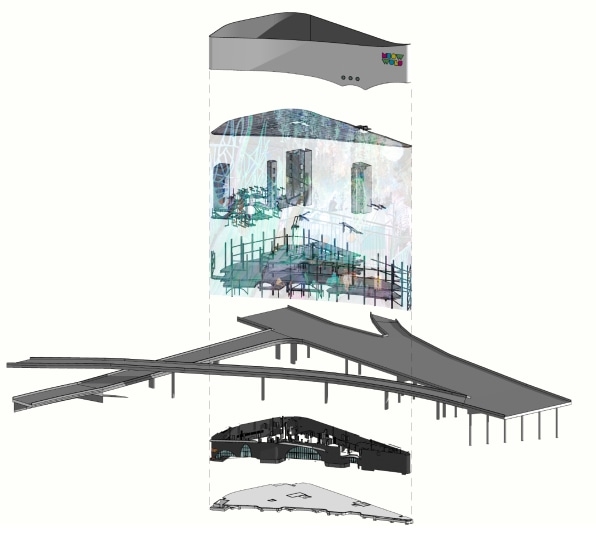
Despite the site’s constraints, the architects created a 95,000-square-foot building that was almost twice the size of Meow Wolf’s minimum requirement. The trick was to build the structure like a high-rise with a steel frame construction and a system for managing fires from within, since the building couldn’t be accessed by firetrucks.
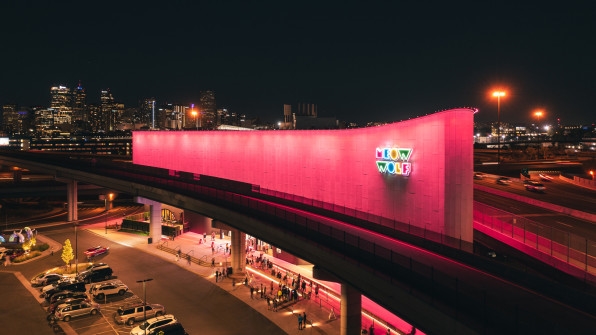
In many ways, this project is like the architectural version of making sweet lemonade out of very, very bitter lemons. And frankly, developers and architects around the world should save the recipe because every city has a site like this—be it a strangely shaped plot in a dead-end street, a narrow, seemingly unusable corner lot, or even residual space near or under a highway. Assigning a new function to these underuSED lots opens up a field of opportunities for much-needed development. This could be a tall and skinny house on a narrow strip of land (something Tokyo has perfected), or a park under a highway, like Boston’s Ink Block or Miami’s Underline.
As cities grow, such infill sites are bound to become increasingly valuable—and creative solutions may become increasingly necessary. “The easier route is to go into the suburbs and build a box and continue the sprawl, but in this day and age, we know that’s not environmentally friendly,” says Kalubek. “There are so many unused pieces of property at the center of many cities that are close to public transit.”
All we need to do now is find them—and invest in them.
Fast Company , Read Full Story
(7)

